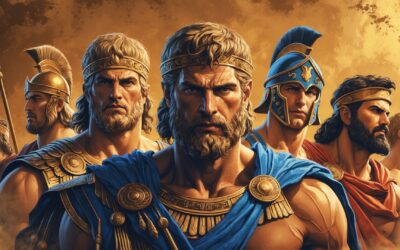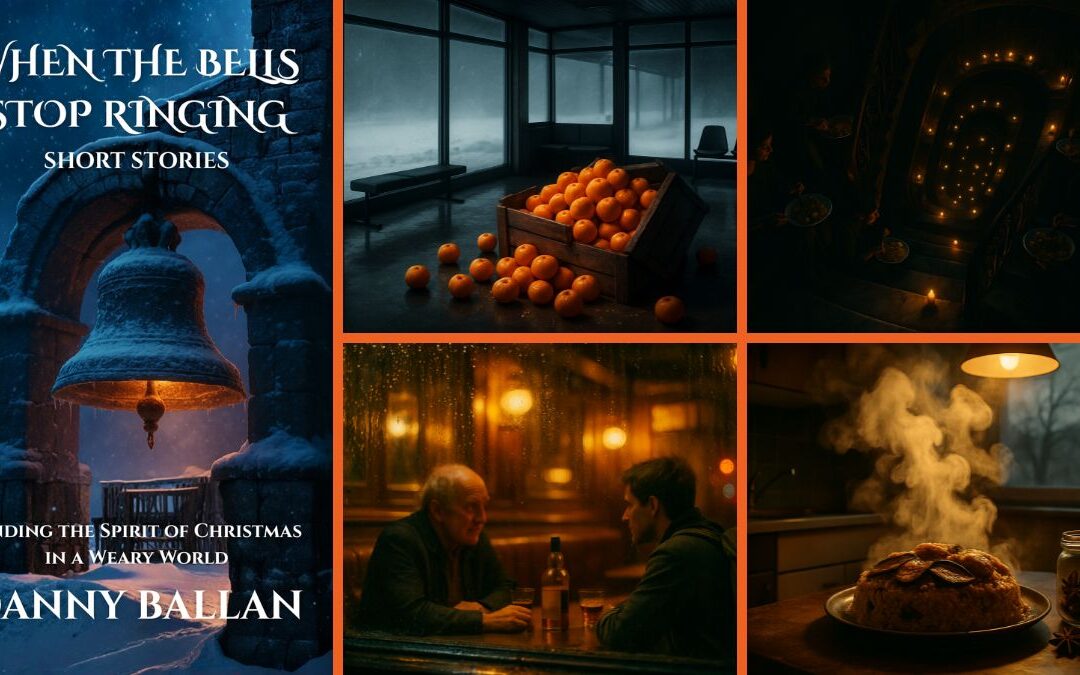- Introduction
- A Tale of Two Cities: A Classic Novel of Love, Revolution and Redemption
- Introduction
- The Plot
- Themes
- The Characters
- The Writing Style
- The Historical Context
- Conclusion
- Plus Discussion Questions
- Q — Why is “A Tale of Two Cities” still relevant today, even though it was written over 160 years ago?
- Q — How does Dickens use language and imagery to bring the story to life and create a vivid portrayal of the French Revolution?
- Q — What is the significance of the novel’s structure and use of symbolism, such as the metaphor of knitting, in adding depth and complexity to the story?
- Q — What is the legacy of “A Tale of Two Cities” in literature and popular culture, and how has it influenced other works of historical fiction?
Introduction
Discover the enduring appeal of Charles Dickens’ classic novel “A Tale of Two Cities.” From its vivid portrayal of the French Revolution to its exploration of themes of love, sacrifice, and redemption, this literary masterpiece continues to captivate readers over 160 years after its initial publication. Learn about the plot, characters, themes, writing style, and historical context of this beloved classic, as well as its adaptations and legacy in popular culture.
A Tale of Two Cities: A Classic Novel of Love, Revolution and Redemption
Introduction
“A Tale of Two Cities” is widely regarded as one of the greatest novels of all time. Set during the French Revolution, the novel tells the story of love, sacrifice, and redemption through the intertwined lives of its characters. With its vivid portrayal of the tumultuous era and its enduring themes, the novel has captured the imagination of readers for over 160 years. In this article, we will explore the plot, characters, themes, writing style, and historical context of “A Tale of Two Cities” and discuss why it remains a beloved classic even today.
The Plot
“A Tale of Two Cities” is set in London and Paris during the late 18th century, a time of political and social upheaval. The novel follows the lives of several characters caught up in the events of the French Revolution. Charles Darnay, a French aristocrat who renounces his title, moves to England, and falls in love with Lucie Manette, a young Frenchwoman who has moved to England with her father, Dr. Manette. Sydney Carton, a disillusioned English lawyer, also falls in love with Lucie but knows that he can never have her. Dr. Manette, a former prisoner of the Bastille who was imprisoned for 18 years, has been traumatized by his experiences and struggles to readjust to life outside of prison. As the revolution in France begins to escalate, the lives of the characters become increasingly intertwined and their loyalties and relationships are tested.
The novel is divided into three parts. The first part introduces the characters and sets the stage for the revolution to come. The second part takes place during the height of the revolution and the third part deals with the aftermath of the revolution. The climax of the novel comes in the form of a dramatic sacrifice, which we will discuss in more detail later in this article.
Themes
One of the most significant themes in “A Tale of Two Cities” is love and sacrifice. Throughout the novel, the characters demonstrate selfless love and make sacrifices for each other. Lucie Manette is the embodiment of this theme, as she dedicates herself to caring for her father and her loved ones. Sydney Carton’s love for Lucie inspires him to make the ultimate sacrifice, which we will discuss later in this article.
Another significant theme is redemption. Sydney Carton, initially portrayed as a cynical and dissolute character, undergoes a profound transformation over the course of the novel. Through his love for Lucie, he finds a sense of purpose and ultimately redeems himself through his ultimate sacrifice. The theme of redemption is intertwined with the theme of sacrifice, as Carton’s redemption comes at the cost of his own life.
The struggle for justice is also a major theme in the novel. The revolution in France was driven by a desire for justice and equality, and the novel explores the political and social injustices that led to the revolution. The characters, particularly Dr. Manette and the Defarges, are deeply affected by these injustices and become involved in the struggle for justice in different ways.
The Characters
The characters in “A Tale of Two Cities” are complex and multi-dimensional. Charles Darnay, the French aristocrat who renounces his title and moves to England, is a man of honor and integrity who struggles to reconcile his past with his present. Sydney Carton, the disillusioned English lawyer, is initially portrayed as a drunken and dissolute character but undergoes a profound transformation over the course of the novel.
Lucie Manette, the young Frenchwoman who moves to England with her father, is a symbol of selfless love and devotion. Her father, Dr. Manette, is a tragic figure who has been traumatized by his experiences in the Bastille. Madame Defarge, the revolutionary who seeks revenge against the aristocrats, is a complex and ambiguous character who represents the darker side of the revolution.
The Writing Style
Charles Dickens’ use of language and imagery is one of the defining features of “A Tale of Two Cities.” His vivid descriptions of the revolution and its aftermath, as well as his portrayal of the characters and their relationships, bring the story to life. The novel’s structure and use of symbolism, such as the use of the metaphor of knitting to represent the revolution, add depth and complexity to the story.
The impact of the novel on literature and culture is also significant. “A Tale of Two Cities” has been adapted for the stage, film, and television many times over the years, and its influence on literature and popular culture is still evident today.
The Historical Context
The French Revolution was a significant event in European history, and “A Tale of Two Cities” is set against the backdrop of this tumultuous era. The revolution was driven by a desire for political and social change and led to the overthrow of the French monarchy. The novel’s portrayal of the revolution and its consequences is both powerful and haunting, and its relevance to contemporary issues and social movements cannot be overstated.
Adaptations and Legacy
“A Tale of Two Cities” has been adapted many times for stage, film, and television, and its enduring popularity is a testament to its lasting impact on popular culture. The novel has also had a significant influence on literature, inspiring countless works of historical fiction and serving as a model for novels that explore themes of love, sacrifice, and redemption.
The novel’s legacy is also evident in the many allusions and references to the book in contemporary culture. The famous opening lines, “It was the best of times, it was the worst of times,” have become part of the cultural lexicon and are often quoted in popular media.
Conclusion
“A Tale of Two Cities” is a literary masterpiece that continues to resonate with readers and audiences today. Its enduring popularity is a testament to its powerful themes of love, sacrifice, and redemption, as well as its vivid portrayal of one of the most significant events in European history. Charles Dickens’ use of language and imagery, as well as his insightful portrayal of the characters and their relationships, make the novel a timeless work of literature. Whether read as a historical novel, a romance, or a meditation on the nature of sacrifice and redemption, “A Tale of Two Cities” remains a beloved classic that will continue to inspire and captivate readers for generations to come.
Plus Discussion Questions
Q — Why is “A Tale of Two Cities” still relevant today, even though it was written over 160 years ago?
There are several reasons why “A Tale of Two Cities” is still relevant today. First, the novel deals with timeless themes such as love, sacrifice, and redemption, which are universal and continue to resonate with readers. Second, the novel provides a vivid and powerful portrayal of the French Revolution, which is a significant event in European history and continues to shape contemporary political and social movements. Third, the novel’s exploration of political and social injustice, and the struggle for justice, is still relevant today and continues to be a pressing issue in many parts of the world. Finally, the novel’s impact on literature and popular culture, and its enduring legacy, are still evident today and continue to inspire new generations of readers and writers.
Q — What role does love and sacrifice play in the novel, and how do the characters demonstrate these themes?
Love and sacrifice are central themes in “A Tale of Two Cities.” Throughout the novel, the characters demonstrate selfless love and make sacrifices for each other.
Lucie Manette is the embodiment of selfless love and devotion. She dedicates herself to caring for her father and her loved ones, and her kindness and compassion have a profound impact on those around her. Her love for Charles Darnay and her willingness to forgive him despite his past show the power of love to overcome even the most difficult of circumstances.
Sydney Carton’s love for Lucie inspires him to make the ultimate sacrifice. Initially portrayed as a cynical and dissolute character, he undergoes a profound transformation over the course of the novel. Through his love for Lucie, he finds a sense of purpose and ultimately redeems himself through his ultimate sacrifice, giving up his own life to save Charles Darnay.
Dr. Manette also demonstrates sacrifice for his loved ones. He dedicates himself to his daughter and tries to protect her from the dangers of the revolution. Madame Defarge, on the other hand, demonstrates sacrifice for her revolutionary ideals and her desire for revenge against the aristocrats.
In summary, love and sacrifice are intertwined themes in the novel, and the characters demonstrate the power of these themes to inspire acts of selflessness and heroism in the face of great adversity.
Q — How does Dickens use language and imagery to bring the story to life and create a vivid portrayal of the French Revolution?
Charles Dickens uses language and imagery to bring the story to life and create a vivid portrayal of the French Revolution. His descriptive writing style allows readers to imagine and experience the sights, sounds, and emotions of the characters in the story.
For example, Dickens uses vivid and evocative descriptions of the poverty and desperation of the French people to convey the injustice and suffering that led to the revolution. He also uses powerful metaphors and symbols to create a deeper meaning and resonance in the story, such as the use of knitting to represent the revolution, and the use of the guillotine as a symbol of the brutality and violence of the revolution.
Moreover, Dickens also uses foreshadowing and irony to heighten the dramatic tension in the story. For instance, the opening lines of the novel, “It was the best of times, it was the worst of times,” foreshadow the tumultuous events that are to follow, and the ironic contrast between the two cities of London and Paris adds to the complexity and richness of the novel.
Overall, Dickens’ masterful use of language and imagery helps to create a vivid and powerful portrayal of the French Revolution, bringing the story to life for readers and making it a timeless work of literature.
Q — What is the significance of the novel’s structure and use of symbolism, such as the metaphor of knitting, in adding depth and complexity to the story?
The novel’s structure and use of symbolism, such as the metaphor of knitting, add depth and complexity to the story, enhancing its meaning and significance.
The novel’s structure is divided into three parts, each of which corresponds to a specific stage of the revolution. This structure not only allows Dickens to build tension and suspense throughout the novel but also reflects the historical progression of the revolution, providing readers with a nuanced and multifaceted understanding of the events.
The use of symbolism, such as the metaphor of knitting, is also significant in adding depth and complexity to the story. The metaphor of knitting is used to represent the revolutionary fervor of the common people and their desire to overthrow the aristocracy. The image of Madame Defarge and her followers knitting a register of names to be sent to the guillotine creates a sense of horror and foreboding, and serves as a powerful symbol of the violence and brutality of the revolution.
Moreover, the image of knitting is also used to represent the interconnectedness of the characters and their fates. The intricate patterns of the knitting reflect the complex relationships between the characters and the ways in which their lives are intertwined. This use of symbolism adds a layer of depth and complexity to the story, highlighting the ways in which the characters’ lives are shaped by historical forces beyond their control.
Overall, the novel’s structure and use of symbolism add depth and complexity to the story, enhancing its meaning and significance and making it a lasting masterpiece of literature.
Q — What is the legacy of “A Tale of Two Cities” in literature and popular culture, and how has it influenced other works of historical fiction?
“A Tale of Two Cities” has had a significant impact on literature and popular culture, and its influence can be seen in a wide range of works of historical fiction.
The novel’s powerful themes of love, sacrifice, and redemption have inspired countless works of literature, and its use of language and imagery has set a standard for descriptive writing that is still emulated today. The novel’s popularity has also led to numerous adaptations for film, television, and the stage, which have introduced the story to new generations of readers and viewers.
Moreover, the novel’s historical significance has inspired other writers to explore similar themes and periods of history. For example, Hilary Mantel’s Booker Prize-winning novels “Wolf Hall” and “Bring Up the Bodies” are set in Tudor England and explore similar themes of power, loyalty, and betrayal. Similarly, Ken Follett’s “The Pillars of the Earth” and its sequels are set in medieval England and explore the building of cathedrals and the struggle for power and influence in the Church.
Overall, “A Tale of Two Cities” remains a powerful and enduring work of literature that continues to inspire new generations of writers and readers. Its influence on historical fiction and popular culture is still evident today, making it a testament to the enduring power of great literature.










0 Comments